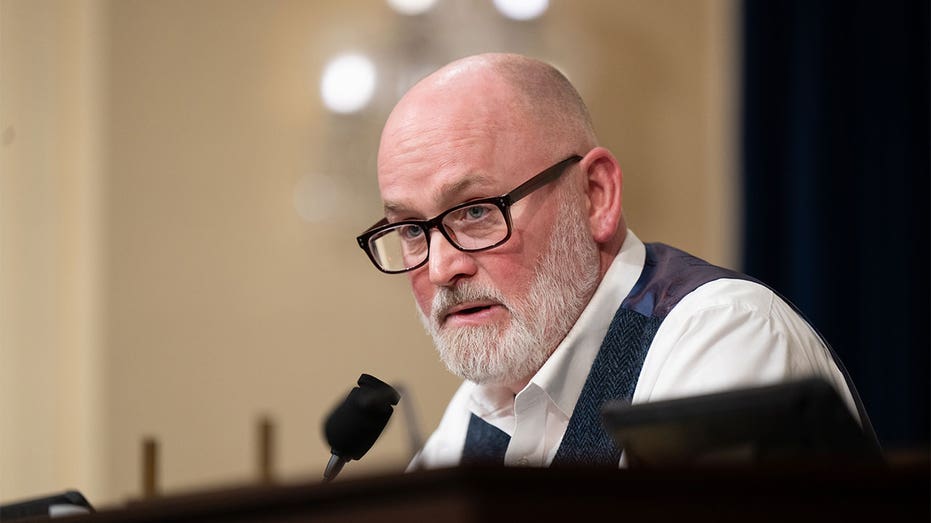With public media under siege, High Plains Public Radio builds a blueprint to cover more rural news with fewer resources

On June 13, High Plains Public Radio received some welcome news: It had been awarded a $750,000 grant from Press Forward.
Over the next three years, the station will build out a regional news contributors network called the High Plains Civic Media Network for the rural communities it serves across the Oklahoma and Texas panhandles, eastern Colorado, western Kansas, and far southwest Nebraska.
The news of the grant came just one day after the House of Representatives voted to slash funding for public media by $1.1 billion. The Senate approved the rescission package that President Trump signed into law in July.
The Corporation for Public Broadcasting defines “Rural Audience Service Stations” as stations with a coverage area population (CAP) density “equal to or less than 40 people per square kilometer.” That works out to about 104 people per square mile.
HPPR’s coverage area, spanning nearly 90 counties and 332 communities, has a CAP density of about nine people per square mile, said Quentin Hope, executive director and founder, including 248 communities with populations under 1,000. “It’s a wide area, rural both by demography, but also in terms of mindset and identity,” he said. (The 1930s Dust Bowl, he added, “was exactly centered in HPPR’s coverage area.” This is a region where large-scale agriculture underpins the economy, but “a very promising wheat crop can be destroyed in minutes by a passing hailstorm.”)

The rescission hits rural stations like HPPR especially hard because they rely heavily on funding from the Corporation for Public Broadcasting (CPB). For High Plains, the loss of expected operating grants combined with the loss of supplementary funding the CPB has long contributed toward critical shared services (like music rights and the satellite system) amount to “about $550,000 in lost money over two years, which is around 15% of the budget,” Hope said. Not only is that a large gap to fill — it’s the loss of “backbone support” from one of the most reliable sources of largely unrestricted operating funding for the station. The CPB had provided funding to HPPR for 45 years of broadcast operation, Hope said.
In a moment when many public media stations are thinking about plugging budget holes and staying afloat, I wanted to talk to Hope about how High Plains is working to build something new even as it reckons with financial pressure. As he wrote in a public statement to HPPR listeners, “rather than a ‘struggle to survive’ I see this work as a time to ‘realize the potential’ of HPPR,” embracing the imperative for public media to innovate that some have explicitly encouraged.
The Press Forward grant was the culmination of years of “strategic thinking” for High Plains Public Radio, Hope said. “It’s the direction we need to go anyway, just to serve more and to serve better.” The threat-turned-reality of losing CPB funding, he added, was “all the more reason to do it.”
“Open calls for funding don’t happen in a bubble,” said Press Forward director Dale Anglin. The team selecting projects to fund took the challenges newsrooms face into account, including threatened public media cuts. She highlighted the “collaborative” nature of the proposed public media project.
“Especially now, we need strong regional infrastructure that can connect smaller stations to larger entities and help them continue to provide essential local news and information to their communities,” Anglin said.
HPPR is not trying to reinvent the wheel entirely. “Lots of pieces of this have been [and are] being done in various places,” Hope said, pointing to the Documenters network as rooted in similar ideas. “There’s a lot of learning in the system and experiments and working models that we hope to draw on, and adapt appropriately.”
Making news sustainable is an especially tall order for rural areas in large part because economies of scale don’t apply. The network should give HPPR a presence in most communities without requiring it to pay full-time reporters in every community. (That presence, in turn, should strengthen HPPR’s pitch to county-specific foundations and trusts; HPPR will seek additional local grant funding for community correspondents.)
HPPR’s best estimate of its weekly cumulative broadcast audience, Hope said, is about 26,000 unique listeners, plus about 2,500 on digital streams. It gets about 28,000 unique monthly website visitors. (See these examples of public radio stations with standout online audiences, mostly in major metro areas.)
“We hope to at least triple this reach by the time the HPCMN is built out,” he said. (Press Forward described HPPR’s civic media network as a service “for more than 600,000 adults across the High Plains region.”)
Expanding and better serving HPPR’s audience also requires a multi-platform emphasis, Hope added, and treating broadcast as one platform among many instead of the primary vector for news. He envisions both the network and central editorial team producing content for multiple platforms, “with an emphasis on digital platforms.”
Since founding HPPR in 1977, Hope has positioned the organization as both “an ear to the world, and a voice of the High Plains,” he said.
Being an NPR affiliate, and carrying the BBC and other music programming, Hope sees HPPR as having “always done well as an ear to the world,” which he said is important in a rural area that can feel isolated. But, he added, “I think we’ve always felt like the voice of the High Plains, we’d never really realized.”
A network tailored to meet local information needs and interests, he hopes, will help HPPR better realize that voice.
The $750,000 from Press Forward doesn’t help HPPR with its CPB budget shortfall. This month, HPPR launched an “Up to Us” bridge funding campaign to raise the two years of lost CPB funding over the next four months on top of its annual end-of-year fundraising (about $215,000 in membership, and $67,000 in sponsorship). HPPR, Hope noted, is in a “highly conservative area,” and doesn’t have the luxury of the short-term “rage giving” many more urban stations (with smaller budget shortfalls) have successfully tapped.
“We’re having to be a little more careful in planning out over the next several months, and from multiple sources,” he said. (The campaign is still primarily geared toward individual donors, but HPPR is also looking for business sponsorship and foundation support, he said.)
Still, “the announcement of the grant was fortuitous, because we could tell a future-oriented story,” Hope said.
“It’s a story that says, ‘this is bridging and building to something that fulfills the mission, but in a far more significant way than you imagined before,’” he said. “It’s the next generation of public media, or civic media for the region. That’s a more powerful story and more compelling one — it’s also a more hopeful story, particularly for staff or for the board, that it’s not a struggle to survive, it’s an opportunity…to fulfill the mission you had in mind from the very start.”
- The second reporting position is not covered by the Press Forward grant, Hope noted; “we’ll need to find other funding” that would cover about $62,000 a year between salary, payroll taxes, and health insurance. He projects HPPR will turn to this in the project’s second year, once the network is up and running, and thinks the position could ultimately be funded jointly with another news organization in the area.
What's Your Reaction?
 Like
0
Like
0
 Dislike
0
Dislike
0
 Love
0
Love
0
 Funny
0
Funny
0
 Angry
0
Angry
0
 Sad
0
Sad
0
 Wow
0
Wow
0







































































